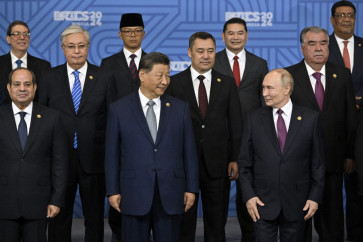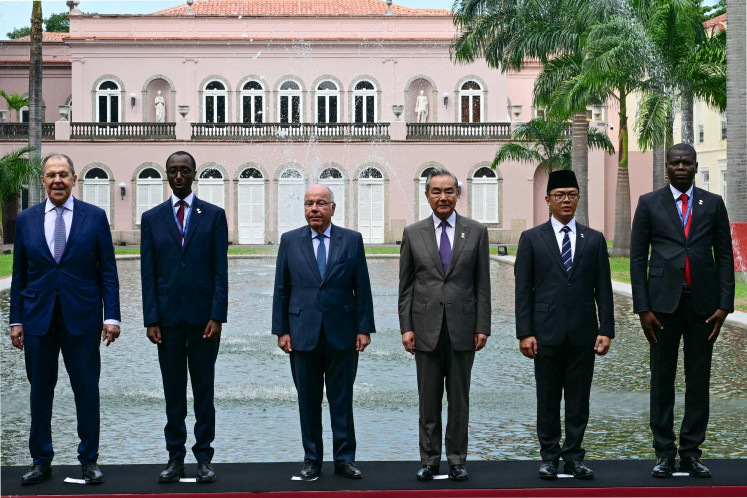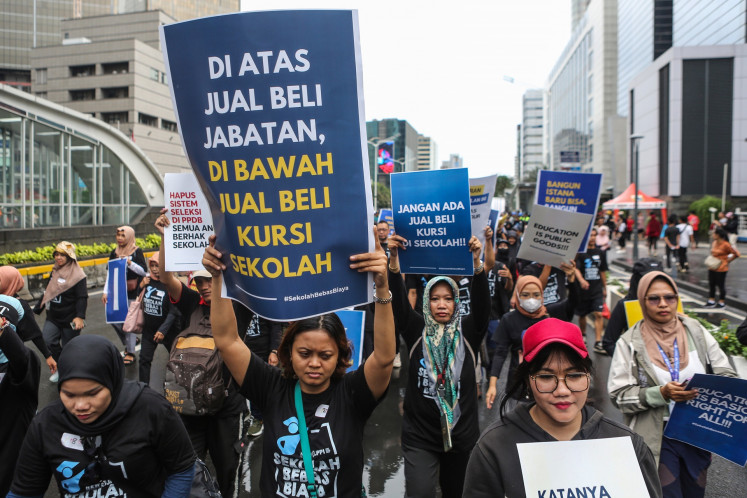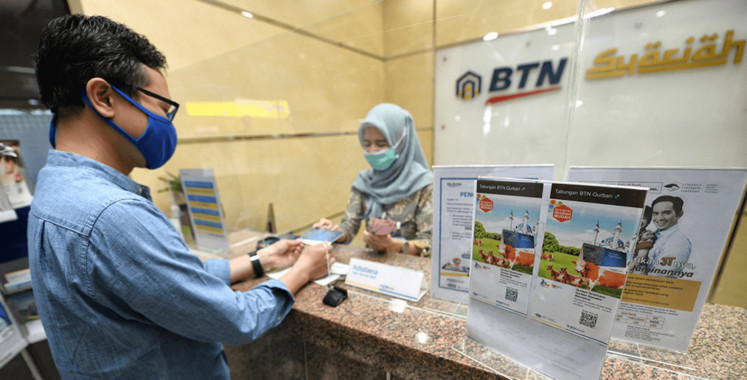RI’s countercyclical fiscal policy and quality spending
The global economic outlook remains uncertain and has become even more uncertain for a number of reasons, such as unpredictable moves by United States President Donald Trump, geopolitical tensions, a trade war, the sharp fluctuation in oil prices and the Chinese economic slowdown
Change text size
Gift Premium Articles
to Anyone

T
he global economic outlook remains uncertain and has become even more uncertain for a number of reasons, such as unpredictable moves by United States President Donald Trump, geopolitical tensions, a trade war, the sharp fluctuation in oil prices and the Chinese economic slowdown.
Economists and analysts have noted that the next recession could be upon us in the next few years, and no country can hide from the global storm when it hits, including Indonesia.
When the 2008-2009 global financial crisis (GFC) triggered by US subprime mortgage defaults hit nations all over the world, Indonesia managed to weather the storm and was able to grow at 4.6 percent in 2009.
The country’s economic growth further rose to 6.2 percent in 2010, thanks in part to countercyclical fiscal and monetary policies.
Indonesia also survived because it already had healthy economic fundamentals, driven by reforms that had taken place in the years following the Asian financial crisis.
On the fiscal side, owing to the introduction of fiscal rules in 2003 (capping the fiscal deficit and debt ratio at 3 percent and 60 percent of gross domestic product (GDP), respectively), the debt ratio stood at 28 percent of the GDP, down from 89 percent in 2000.
With much greater fiscal health, when the GFC hit the country, the Indonesian government had enough fiscal space to launch a fiscal stimulus package worth Rp 73.2 trillion (US$5.17 million) as a form of countercyclical policy.
From the stimulus program, about Rp 60.6 trillion or 83 percent actually materialized. Fiscal stimulus came in the form of tax cuts and tax subsidies on the revenue side and in the form of a diesel fuel price cut, a special electricity tariff for industry, expanded PNPM (aid to micro and small businesses) funds as well as infrastructure spending on the expenditure side.
Save in good times, spend in bad times, or — in another word — countercyclical. That’s what fiscal policy ideally does. However, for developing countries including Indonesia, it is not easy to pursue a countercyclical fiscal policy, because in good times the government usually has a pro-growth fiscal policy to help the economy grow (pro-cyclical).
And conversely, they typically contract spending in bad times due to not having enough fiscal space to spend more to prevent the economy from falling.
According to a report of the World Bank led by Carlos Vegh in 2017 that studied the correlation between the cyclical components of real GDP and government spending for 21 industrial and 75 developing countries in the period of 1960 to 2016, with only a few exceptions (most notably Greece and Portugal), all industrial countries had espoused countercyclical policies.
On the other side, in sharp contrast, 87 percent of the developing countries had typically been pro-cyclical. Indonesia, according to the report, was categorized as carrying out a pro-cyclical fiscal policy during that period.
It is understandable that Indonesia’s fiscal policy was pro-cyclical in most of the period of 1960-2016, as the country had to have a pro-growth fiscal policy to help the economy grow.
However, it is clear that Indonesia carried out a countercyclical fiscal policy during the GFC to save the economy with a fiscal stimulus package.
Moreover, since 2015, Indonesia’s economic growth kept increasing slightly from 4.9 percent to 5.2 percent in 2018, but the fiscal deficit as a percentage of GDP had been narrowing from 2.59 percent in 2015 to 1.76 percent in 2018.
This development signals a countercyclical fiscal policy stance by the government to increase its fiscal buffer.
Going forward, Indonesia’s, in its mid-term fiscal framework 2018-2022, aims to narrow its fiscal deficit to around 1.5 percent to GDP and expects a positive primary balance starting in 2020.
Actual budget spending in 2018 also showed that Indonesia’s is on track with its plan, as the budget only had a 1.76 percent deficit with a negative primary balance close to zero (both were the lowest in four years).
The country’s debt ratio in 2018 stood at 30 percent to GDP, much lower than in other emerging countries, such as Malaysia (55 percent), Mexico (54 percent), Thailand (42 percent), Philippines (40 percent), India (70 percent) or Brazil (88 percent).
With these pleasant results, Indonesia is on track with its plan to pursue a countercyclical fiscal policy, and hopefully, when bad times come, Indonesia will be ready to face them — but let us hope it never needs to.
Nevertheless, aside from the question of whether Indonesia’s fiscal policy is countercyclical or not, one thing that is obvious is that the Indonesian government has been concerned about its spending quality since 2014. The government has been allocating and implementing more productive expenditure instead of accepting the notion to push the fiscal deficit level cap further, as the government realizes there is still much room to optimize its existing budget allocation and implementation.
Among other items, the 2019 budget has increased spending on infrastructure to Rp 415 trillion (2014: Rp 154.7 trillion) and on education to Rp 492.5 trillion (2014: Rp 353.4 trillion), while cutting spending on energy subsidies to Rp 160 trillion (2014: Rp 360 trillion), partly in favor of higher social protection spending, which now amounts to Rp 387.3 trillion (2015: Rp 249.7 trillion) for the 40 percent most vulnerable people in the country. Last but not least, health expenditure has increased to Rp 123.1 trillion (2014: Rp 59.7 trillion). Thanks to these productive outlays, the country’s economic grow is expected to rise with improving human capital and stability is expected to be maintained.
Amid the relatively uncertain and unpredictable global economic landscape, just like the prominent French chemist and biologist Louis Pasteur once said, fortune favors the prepared mind. Hopefully Indonesia is prepared enough to overcome anything coming at the country, especially in the bad times.
______________________
The writer is an analyst at the Finance Ministry’s Fiscal Policy Agency.









